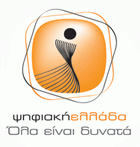JavaScript is disabled for your browser. Some features of this site may not work without it.
| dc.contributor.author | Παπαθανασόγλου, Ελισάβετ Δ. | el |
| dc.contributor.author | Μπουζίκα, Μερόπη Δ. | el |
| dc.date.accessioned | 2015-05-12T09:55:15Z | |
| dc.date.issued | 2015-05-12 | |
| dc.identifier.uri | http://hdl.handle.net/11400/10198 | |
| dc.rights | Αναφορά Δημιουργού-Μη Εμπορική Χρήση-Όχι Παράγωγα Έργα 3.0 Ηνωμένες Πολιτείες | * |
| dc.rights.uri | http://creativecommons.org/licenses/by-nc-nd/3.0/us/ | * |
| dc.source | http://brn.sagepub.com/content/14/4/431 | el |
| dc.subject | Critical care medicine | |
| dc.subject | Autonomic nervous system | |
| dc.subject | Physiological effects | |
| dc.subject | Stress (Physiology) | |
| dc.subject | Massage | |
| dc.subject | Touch--Therapeutic use | |
| dc.subject | Interpersonal touch | |
| dc.subject | Διαπροσωπική επαφή | |
| dc.subject | Εντατική θεραπεία | |
| dc.subject | Critical illness | |
| dc.subject | Κρίσιμη ασθένεια | |
| dc.subject | Αυτόνομο νευρικό σύστημα | |
| dc.subject | Φυσιολογικές επιδράσεις | |
| dc.subject | Στρες (Φυσιολογία) | |
| dc.subject | Εντριβή (μασάζ) | |
| dc.subject | Επαφή--Θεραπευτική χρήση | |
| dc.title | Interpersonal touch | en |
| heal.type | journalArticle | |
| heal.secondaryTitle | physiological effects in critical care | en |
| heal.classification | Medicine | |
| heal.classification | Nursing | |
| heal.classification | Ιατρική | |
| heal.classification | Νοσηλευτική | |
| heal.classificationURI | http://id.loc.gov/authorities/subjects/sh00006614 | |
| heal.classificationURI | http://skos.um.es/unescothes/C02778 | |
| heal.classificationURI | **N/A**-Ιατρική | |
| heal.classificationURI | **N/A**-Νοσηλευτική | |
| heal.keywordURI | http://id.loc.gov/authorities/subjects/sh85034133 | |
| heal.keywordURI | http://id.loc.gov/authorities/subjects/sh85090938 | |
| heal.keywordURI | http://skos.um.es/unescothes/C02997 | |
| heal.keywordURI | http://id.loc.gov/authorities/subjects/sh85128702 | |
| heal.keywordURI | http://id.loc.gov/authorities/subjects/sh85081957 | |
| heal.keywordURI | http://id.loc.gov/authorities/subjects/sh2007004910 | |
| heal.identifier.secondary | doi: 10.1177/1099800412451312 | |
| heal.dateAvailable | 10000-01-01 | |
| heal.language | en | |
| heal.access | forever | |
| heal.recordProvider | Τεχνολογικό Εκπαιδευτικό Ίδρυμα Αθήνας.Σχολή Επαγγελμάτων Υγείας και Πρόνοιας. Τμήμα Νοσηλευτικής | el |
| heal.publicationDate | 2012-10 | |
| heal.bibliographicCitation | Papathanassoglou, E. D. and Mpouzika, M. D. (2012). Interpersonal touch: physiological effects in critical care. "Biological Research for Nursing" 14(4). October 2012. pp. 431-443. Available from: http://brn.sagepub.com/content/14/4/431. [Accessed 06/06/2012] | en |
| heal.abstract | Introduction: Nurses use several forms of touch in patient encounters. Interpersonal touch elicits specific physiological and psychological responses, including neuroendocrine effects and reduction of stress. Critical illness is a state of excessive physiological and psychological stress. Aims: To critically review evidence on the effect of touch on physiological outcomes in critically ill individuals. Results of intervention studies in adult critical care settings were reviewed along with supportive evidence from studies in other populations. Methods: Critical literature review based on studies published in MEDLINE, PubMed, Cinahl, Embase, and Cochrane databases. Results: Eleven studies were reviewed. Significant effects of interpersonal touch included lower systolic and diastolic blood pressure and respiratory rate, improved sleep, and decreased pain. Almost no results were replicated owing to discrepancies among studies. Although the effect of touch on cardiovascular autonomic status appears considerable, several confounders must be considered. In noncritically ill populations, replicable findings included increased urinary dopamine and serotonin, natural killer cytotoxic activity, and salivary chromogranin. Effects on plasma cortisol and immune cells were variable. Effects appear to vary according to amount of pressure, body site, duration, and timing: Moderate pressure touch may elicit a parasympathetic response in contrast to light touch, which may elicit a sympathetic response. Moreover, touch effects may be mediated by the density of autonomic innervation received by the body areas involved and repetition of sessions. Conclusion: The physiological pathway mediating the effects of touch is unclear. Although no concrete conclusions can be drawn, research evidence suggests that touch interventions may benefit critically ill individuals. | en |
| heal.journalName | Biological Research for Nursing | en |
| heal.journalType | peer-reviewed | |
| heal.fullTextAvailability | false |
Αρχεία σε αυτό το τεκμήριο
| Αρχεία | Μέγεθος | Μορφότυπο | Προβολή |
|---|---|---|---|
|
Δεν υπάρχουν αρχεία που σχετίζονται με αυτό το τεκμήριο. |
|||
Οι παρακάτω άδειες σχετίζονται με αυτό το τεκμήριο:








